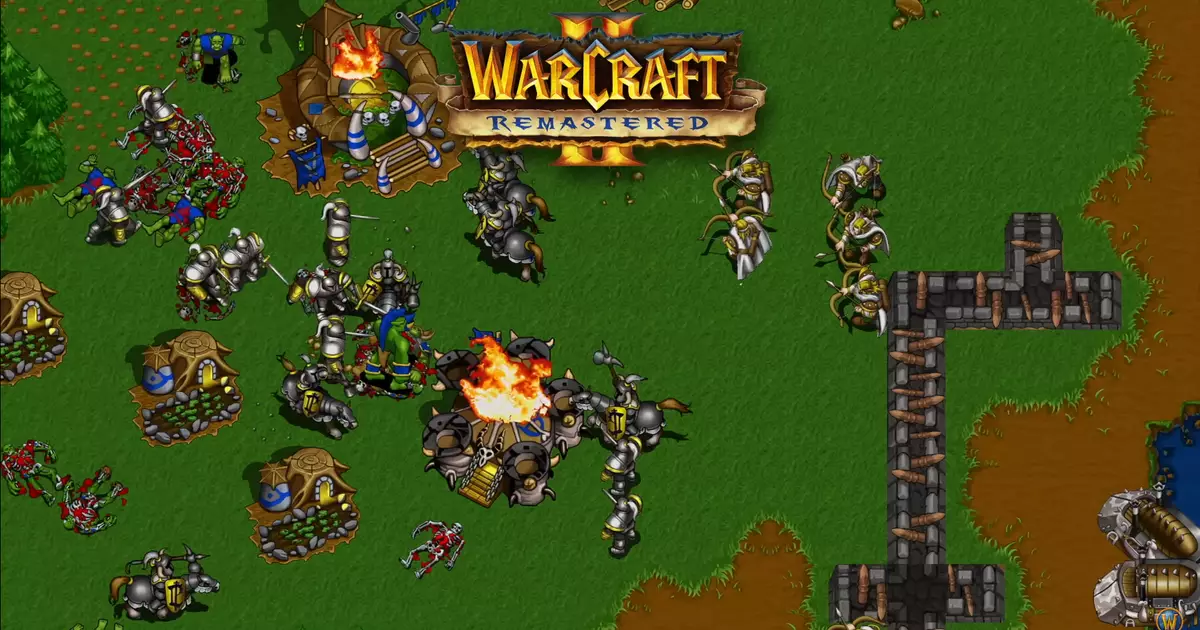In an unexpected turn of events, Blizzard Entertainment has rolled out remasters of two iconic titles from the Warcraft franchise, Warcraft: Orcs & Humans and Warcraft II: Tides Of Darkness. The surprise announcement follows shortly after leaked artwork hinted at these remastered versions. Together, these games are conveniently packaged within the “Warcraft Remastered Battle Chest,” which also features Warcraft III: Reforged, sporting its own new patch. Enthusiasts can grab this bundle for £34.99 / $39.99 on Battle.net or opt for individual purchases of the earlier titles.
Fans of the original games can expect several enhancements designed to bring them closer in line with contemporary gaming standards. Notably, Warcraft 1 will benefit from adjusted controls, allowing for a more comprehensive gameplay experience akin to its sequel. Players can also look forward to customizable user interfaces (UI) and user experiences (UX), ensuring a tailored gaming experience conducive to modern preferences.
Warcraft II’s multiplayer remains intact, which is a significant advantage, especially for long-time fans who cherish the legacy custom maps and community-driven experiences that defined the game. Furthermore, both remasters also feature updated visual assets, promising a fresh coat of paint while maintaining the essence of the original games. Meanwhile, Warcraft III: Reforged receives a commendable 2.0 patch that updates classic HD assets and enhances environmental visuals, allowing players to customize their armies according to their preferred aesthetic.
Despite the engaging gameplay enhancements, the visual aspect of the remasters has not gone unnoticed. Many players, including myself, find the art style disappointingly disjointed. Without mincing words, the aesthetic seems reminiscent of subpar Flash games prevalent on platforms like Newgrounds—often a far cry from the rich, immersive visual experiences anticipated from such beloved titles.
From oversaturated colors that assault the senses to an overall design that feels childlike in a less-than-inspiring manner, the remastered graphics evoke confusion rather than nostalgia. For many, the vibrant hues and juvenile styles represent an artistic regression that risks alienating long-time fans who recall the original graphics fondly. The charm of the original palette appears compromised, making it difficult to overlook the flaws in these enhancements.
Blizzard’s venture into remastering classic titles is a double-edged sword. While the gameplay mechanics have certainly been modernized to improve accessibility and enhance the overall player experience, the artistic direction leaves much to be desired. For those who approach these remasters with an open mind, there may still be enjoyment to be found. However, many ardent fans of the series might feel conflicted, caught between nostalgia and disappointment. As Blizzard continues to sell these remastered versions, one can only hope that they provide an experience worthy of the beloved legacy they seek to honor.

